The Curtiss SB2C Helldiver was a standard US Navy carrier-borne dive bomber of WWII. Despite it’s somewhat mixed reputation with American pilots, it was extremely effective during the war. The Helldiver scored more dive bombing sinkings of enemy ships than any other Allied dive bomber. It’s post-WWII career with the US Navy was short. The US Navy began converting Helldiver squadrons to other types (or simply disbanding the squadrons) in 1946. The final US Navy attack squadron to fly Helldivers was VA-54, which flew them off USS Valley Forge (CV-45) in 1949. However, the Helldiver saw long and varied use after the war elsewhere.
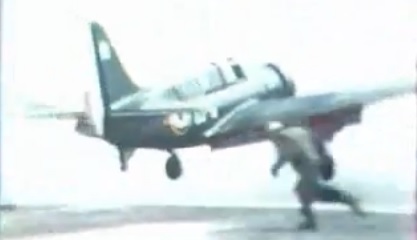 (A French navy Helldiver takes off from the aircraft carrier Arromanches in the 1950s.)
(A French navy Helldiver takes off from the aircraft carrier Arromanches in the 1950s.)
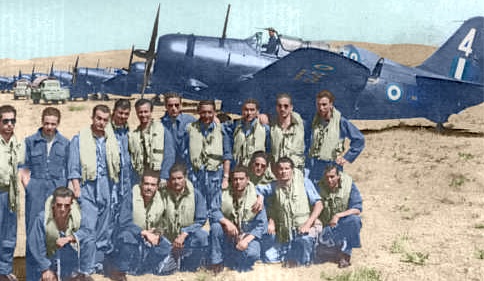 (Hellenic Air Force Helldiver unit in the late 1940s)
(Hellenic Air Force Helldiver unit in the late 1940s)
SB2C Helldiver characteristics
The Helldiver had a top speed of 255 kts or 170 kts in normal horizontal flight, a ceiling of 25,000′, with a range of 1,013 NM carrying a 1000 lb bomb. It was powered by a Wright R-2600 Twin Cyclone piston engine. The Helldiver had a two-man crew (pilot and rearwards-facing gunner). The gun armament was a Mk2 20mm gun in each wing (with 800rds ammo), plus a twin M1919 machine gun for the rearwards-facing gunner. The normal payload was one 1,000 lb bomb or one Mk13 torpedo in the internal bay, plus 500 lb-rated hardpoints under the wings for smaller bombs, napalm tanks, depth charges, or gun pods.The Helldiver had folding wings and an arrestor hook for use on aircraft carriers.
Greek use
During the Greek Civil War, the Hellenic Air Force found itself critically short of strike aircraft. The HAF normally flew tactical bombing missions with Spitfire fighters, or with hastily-modified C-47 Dakota transports; neither really being a satisfactory option. In mid-1949, the United States shipped forty-eight SB2C Helldivers to Greece aboard the aircraft carrier USS Sicily (CVE-118), itself a WWII veteran. Upon arrival, six of the planes were relegated to ground instruction or spare parts cannibalization use. The remaining forty-two planes were immediately issued to the HAF’s 336th Squadron at Larissa airbase. The Helldivers replaced Spitfires previously operated by the unit. The Greek planes were painted in USN semi-gloss blue. The plane was called “Teras” (beast) by the Greeks.
The Greeks made several changes to their planes. As the communist guerrillas obviously had no fighters to oppose the HAF, the rearwards twin machine gun was deleted and the gunner’s seat left empty. The saved weight slightly reduced the takeoff run. The tailwheels, which were solid rubber in US Navy use to reduce deck bounce when landing on a carrier, were replaced by locally-made inflatable tires.
Almost immediately, the 336th Squadron’s Helldivers entered combat. They were extremely effective ground attack aircraft, often being armed (picture below) with two twin .50cal machine gun pods which, along with the 20mm guns, made for quite a strafing run. Common iron bombs were used as well, and napalm tanks saw heavy use by the Greek Helldivers.
On 24 August 1949, Helldivers were critical to the battle of Grammos, one of the last pitched battles of the civil war. Besides strafing runs, the Helldivers fired about 2,000 air-to-ground rockets and dropped 114 napalm bombs on the communists. Immediately after the Grammos battle, the Helldivers attacked communist positions near Vitsi, isolating them on two sides from the rest of Greece to the south and the Albanian border to the north. This was the last air action of the war. Only about 1,000 communist troops remained in the area and they either surrendered or fled in small groups across the border to Albania, ending the Greek civil war.
None of the HAF’s Helldivers were shot down, however a few had already been written off due to airframe fatigue. About three dozen were still in service with the HAF. The type had definitely proven itself during the conflict and was well-liked by Greek pilots. On 6 September 1949, several Helldivers flew a victory airshow over Athens, including a mock dive bombing run on the Acropolis to entertain the crowd.
During the summer of 1953, the 336th Squadron converted to the F-84 Thunderjet and the old Helldivers were withdrawn from frontline service and placed into secondary status. As their numbers dwindled they were used for occasional daytime reconnaissance and as squadron “hack” planes. The type was finally retired in 1957. Today one is preserved as a museum piece at Decelea.
French use
In 1949, the French navy selected surplus SB2C Helldivers as the replacement for it’s worn out SBD Dauntless dive bombers, themselves WWII veterans. Two squadrons were purchased, equipping Flottille 3F and Flottille 16F; both frontline aircraft carrier squadrons.
The Helldiver flew off three French aircraft carriers, the large British-built fleet carrier Arromanches, and the two WWII-veteran escort carriers, Bois Belleau (ex-USS Belleau Wood CVL-24) and Lafayette (ex-USS Langley CVL-27).
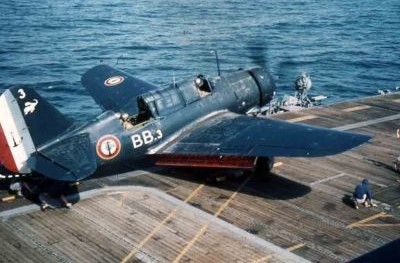 (A French navy Helldiver warming up; the elevator pattern and deck planking identifies the ship as either Lafayette or Bois Belleau.) (photo from Langevin collection)
(A French navy Helldiver warming up; the elevator pattern and deck planking identifies the ship as either Lafayette or Bois Belleau.) (photo from Langevin collection)
(A French navy Helldiver ‘catches the wire’ aboard Lafayette in 1951. The large 17′-diameter dish in the background is a WWII-vintage SK-2 air search radar, which was still used onboard Lafayette.)
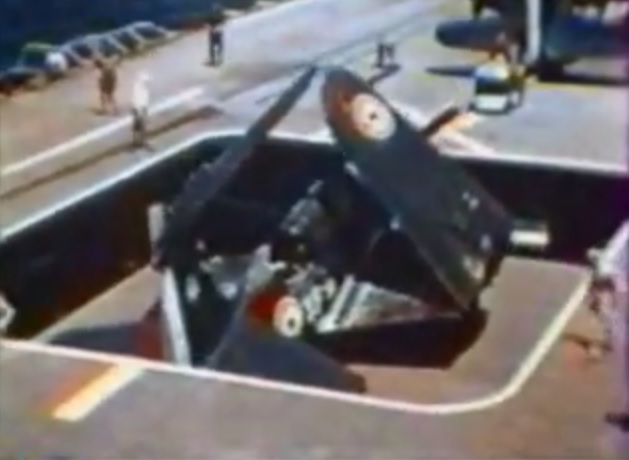 (A French navy Helldiver of Flotille 3F is struck to the hangar deck of the aircraft carrier Arromanches.)
(A French navy Helldiver of Flotille 3F is struck to the hangar deck of the aircraft carrier Arromanches.)
The French encountered some minor training and maintenance problems early on but quickly overcame these, and as soon as the two squadrons were ready, they immediately deployed to Asia to help in the Indochina War. The standard armament for France’s Helldivers was American-made M64 500 pound bombs, or (more commonly) the HVAR “Holy Moses” unguided air-to-ground rocket, as seen below. Four of these could be carried under each wing, and the weapon was extremely effective against the Vietnamese communists. A number of French Helldivers were also wired to carry the AN/APS-4 radar pod, operated by the erstwhile rear crewman.
During the period 1951-1954, the two Helldiver squadrons flew with tremendous effect in Indochina. They were extremely reliable, had good range, were very tough, and could deliver ordnance with great accuracy. In short, they were perfect for what France needed during the conflict. Although the Corsair is most often associated with France’s war in Indochina, on a per-plane basis the Helldiver was possibly the most single effective type, delivering sortie after sortie with great effect.
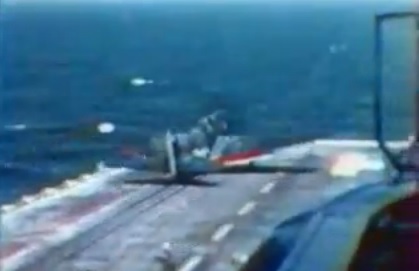 (A French navy Helldiver takes off from Arromanches for a strike mission over Indochina.)
(A French navy Helldiver takes off from Arromanches for a strike mission over Indochina.)
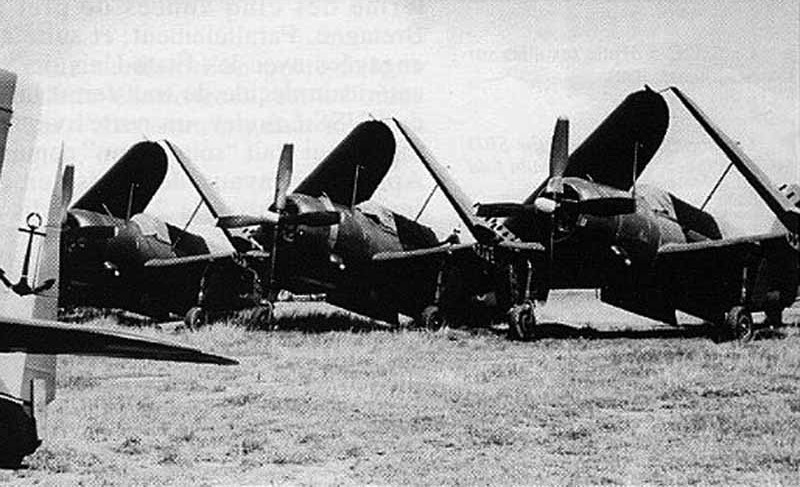 (Often the Helldivers were deployed ashore to shorten their flight time to the battlefield, as in this 1952 photo. These planes are at Airbase 194 near Nha Trang in what is today central Vietnam.)
(Often the Helldivers were deployed ashore to shorten their flight time to the battlefield, as in this 1952 photo. These planes are at Airbase 194 near Nha Trang in what is today central Vietnam.)
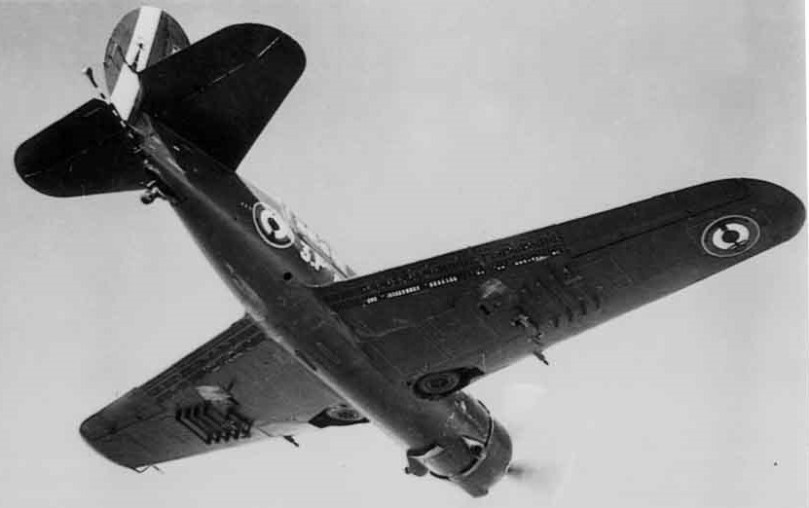 (An underside view of the Helldiver in flight, showing the four Holy Moses mounts under each wing near the 20mm muzzles, the perforated dive brakes, and the tailhook.)
(An underside view of the Helldiver in flight, showing the four Holy Moses mounts under each wing near the 20mm muzzles, the perforated dive brakes, and the tailhook.)
France’s war in Indochina culminated with the disastrous 1 May-7 May 1954 defeat at Dien Ben Phu, and the conflict ended that summer. The Helldiver had given excellent service in the counter-insurgency role but the planes were worn out. The two operating units transitioned to either the Corsair or the Avenger, and beginning in 1954 all serviceable Helldivers were split up between the 1st, 2nd, and 54th Flottilles, where they were used as support and test planes. France retired it’s last Helldivers in 1958.
Italian use
Italy’s experience with the Helldiver was brief but interesting. In 1950, when the first post-WWII formal rearmament plan was put forward, the Italian navy identified as a priority obtaining a surplus American light aircraft carrier, with appropriate air wing. A team was sent to Naval Air Station Corpus Christi TX, where two pilots trained and qualified on the Helldiver, later practicing carrier operations aboard USS Midway (CV-41) where four more pilots earned US Navy carrier wings. In September 1952, two surplus Helldivers were presented to the Italian navy as a gift by the USA. The two planes were delivered to Naples, Italy.
Unfortunately for the Italian navy, there was still a Mussolini-era law on the books called Legge 1000 Kilo (law of a thousand kilograms) which mandated that only the Italian air force could fly planes over 2,200 lbs weight. As the result of a bizarre inter-services lawsuit, the navy was forced to abandon plans for both it’s aircraft carrier wish and the Helldivers.
A total of forty-six Helldivers were eventually transferred to the Italian air force (the two former navy planes plus a further forty-four). The Italian air force assigned them to the 86th Autonomous Antisubmarine Group at Grottaglie air base, where they flew ASW missions with depth charges. The Helldiver was not popular with the Italians…as an anecdotal example, they were housed in a disused WWII-era blimp hangar. They were viewed as obsolete and too difficult to master pilots on. The crews were also not keen on flying a single-engine type on long overwater patrols.
The Italian planes were only in frontline service for about one year. In 1953, they were replaced by PV-2 Harpoons and (later) S-2 Trackers, which were much more suitable to long-range ASW missions.
Portuguese use
The navy of Portugal received twenty-four surplus Helldivers in 1950, forming a dedicated anti-shipping unit at Montijo. They were well-received, with a reputation for being tough and reliable. Besides their normal armament, they were wired to carry the AN/APS-4 radar pod, as seen in the artwork below.
In 1952, Portugal combined it’s former Army Aviation and Naval Aviation into a new independent air force. The Portuguese air force (FAP) which assumed control of the Helldivers. They were kept together in a new “naval cooperation” squadron, and also now tasked with overland ground attack missions.
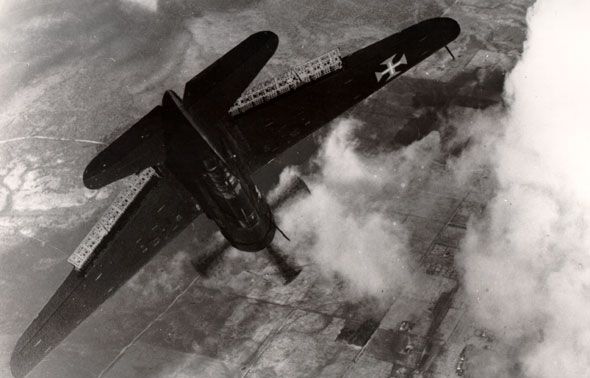 (A Portuguese Helldiver in full diving attack, showing the dive brakes deployed on the wings.)
(A Portuguese Helldiver in full diving attack, showing the dive brakes deployed on the wings.)
The FAP continued to use the Helldiver as a frontline asset until 1956, when the squadron began to re-equip with PV-2 Harpoons. The last example was withdrawn from use in 1958, about three years before the start of Portugal’s colonial wars in Africa where they might have come in handy.
Thai use
Under the Military Assistance Program, the Royal Thai Navy received six SB2C-5 Helldivers in April 1951, as a replacement for WWII-era Japanese warplanes. The Thai military designation for the Helldiver was “Attacker Type 3”. As no Thai pilot was yet qualified on the type, they were delivered as deck cargo by USS Cape Esperance (CVE-88) and then floated on river barges to U-Tapao air base.
The Royal Thai navy planned to form a modern maritime strike squadron with the six Helldivers, along with ten F8F Bearcat fighters. However after a failed coup led by naval officers, the Thai government stripped the navy of both it’s marine corps and air wing, transferring them to the army and air force respectively. The RTAF continued to use the Helldivers as it’s main anti-ship asset. As the RTAF had little interest in investing in more naval strike planes, the Helldivers were well cared for.
The six planes remained in regular use until about 1960 when their flight hours began to dwindle. They were retired in 1963, with one going to the national aviation museum as seen above.
Thailand was the last country in the world flying the Helldiver, and with it’s retirement there, the story of this warrior of the 1940s Pacific came to a close.

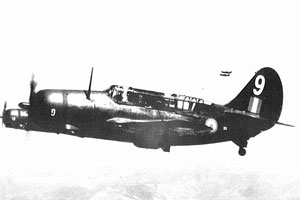
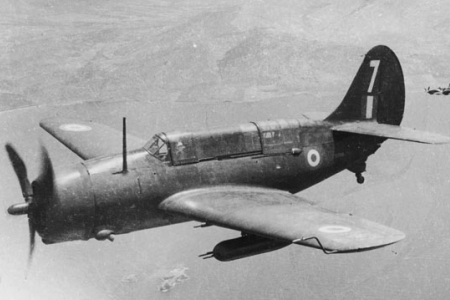
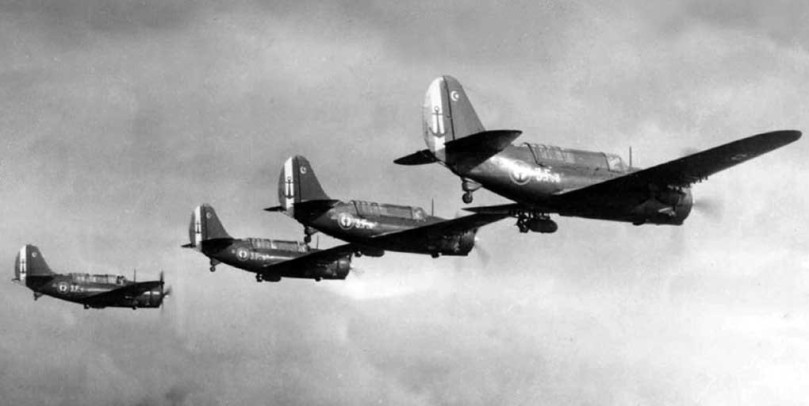
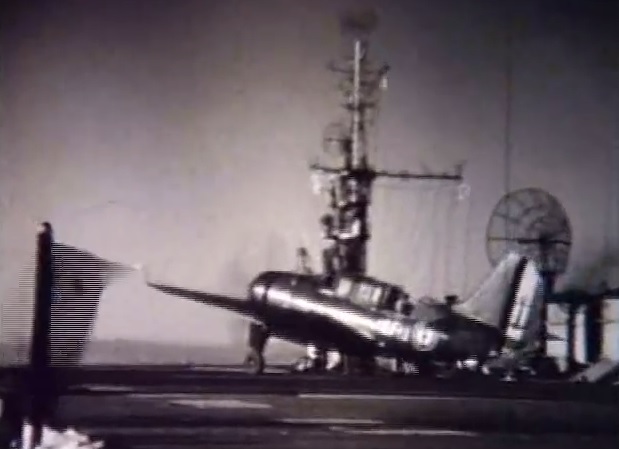
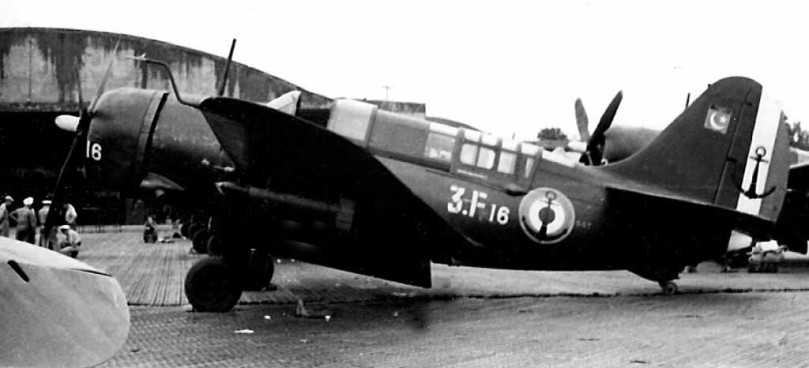
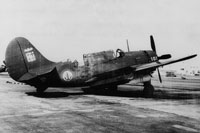
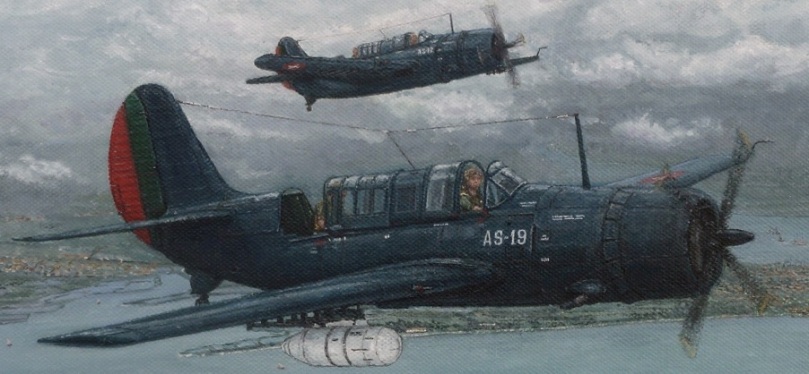
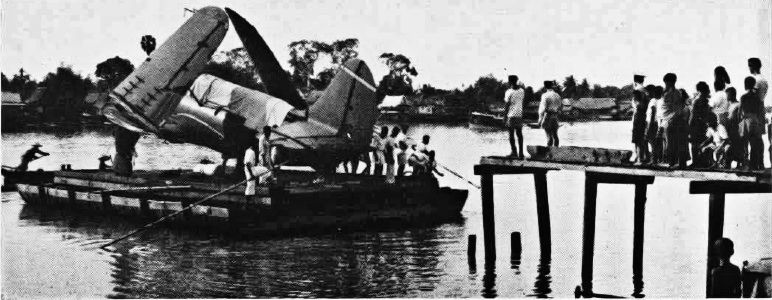
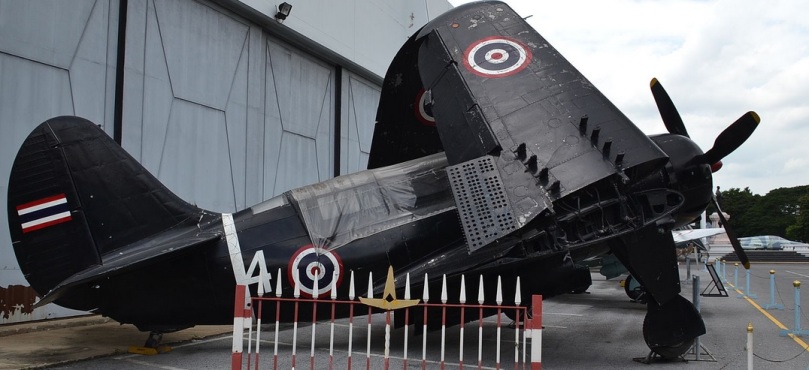
Reblogged this on Brittius.
LikeLike
Also used by the Italian Marina Militare as a target tug. Not well-liked by aircrews.
LikeLiked by 1 person
Reblogged this on My Forgotten Hobby and commented:
For Helldiver lovers
LikeLike
Great post about my favourite airplane.
LikeLiked by 1 person
Interestingly the portuguese army is still using the MG 42 in regular service… in 2016.
LikeLiked by 1 person